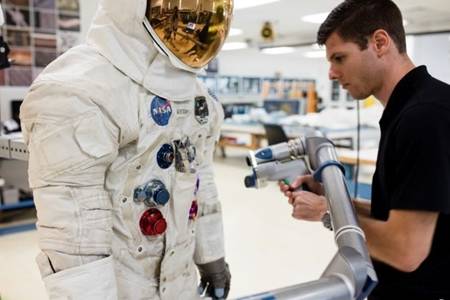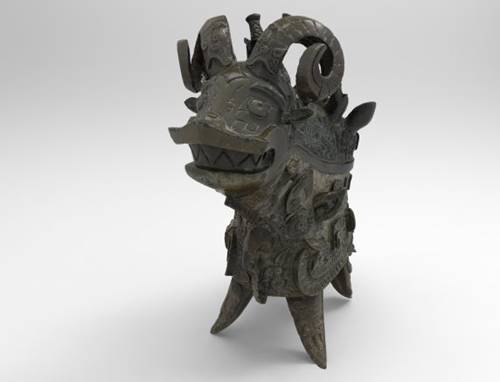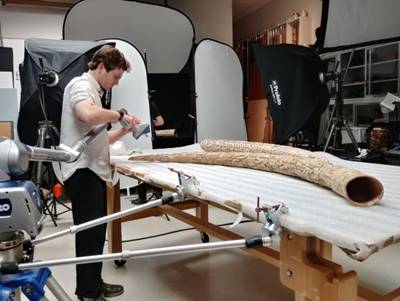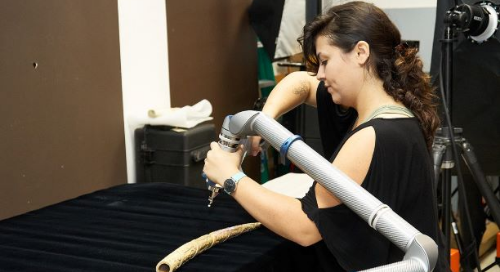Museums and research institutions are turning to new approaches to amplify their education, conservation and research-based work. At the Smithsonian Institution’s Office of 3D Digitization, emerging technology is being used to scan artifacts so visitors, researchers and students can interact with its collections in a more active and creative way.
FARO recently spoke with Diane Zorich, Director of the Smithsonian’s Office of 3D Digitization, about why 3D scanning technology is changing the way museums are bringing their collections to life.
FARO: Can you describe how your office operates within the Smithsonian Institution?
DZ: The Smithsonian is comprised of 19 museums, nine research centers, a zoo, and botanical gardens, and each of those particular units has a certain amount of autonomy to work on their own collections and exhibits separately.
The Office of 3D Digitization was founded in 2009 to understand and coordinate how much of our overall collection had been digitized. Over time, our work expanded to identifying and implementing new technology to help in these efforts. We have 2D and 3D digitization efforts within our scope.
We began using 3D scanning in 2012 as a kind of experiment to see what the potential of the technology was for us. Since then, we’ve scanned hundreds of items and are poised to scale up to thousands. We’re watching industries very carefully to see what other technology is emerging because we want to increase what we scan and still lower the cost to do it.
FARO: What kind of technology do you use for data capture?
DZ: We use a range of options… photogrammetry, laser scanning, of course, structured light scanning… It depends on several factors, like how much time we have or the kind of scan we’re after.
FARO: How do you decide what to scan?
DZ: Most of the time, we’re driven by what the museums identify as their top needs, and there’s a ton of great things we’d love to scan. If we can’t do a scan by ourselves, the availability of external partners helps us decide. For example, we wouldn’t have been able to scan the Apollo 11 command module by ourselves, but Autodesk’s participation helped us make it a priority.
FARO: What were some of the important consideration as you were determining how to proceed with the technology?
DZ: We have a lot of diverse collections – things as small as parasites and as large as a space shuttle – so you have to think about what makes the most sense to 3D digitize and can it even be done? Even today, it’s still difficult to 3D digitize bright, shiny things. So, we’d love to scan our coin collection from the Museum of American History that would be wonderful to scan, but it’s problematic to do so right now. Another consideration is, do we have access to the object for as long as it takes to scan it? We finished scans of the Apollo 11 command module right before it embarked on its nationwide tour.
Also, the data files can be huge, so we need to think about how to best preserve them for use in the future. There’s a whole series of issues to be addressed before we can do anything, and some of them are just beyond our control, like the material composition of the object or access to it.
FARO: Have you discovered a lot of value in using this technology?
DZ: Yes! Everything we’ve scanned has value in some way or another.

There are also conservation use cases. For example, our Hirshhorn Museum and Sculpture Garden has some very intricate modern sculptures with very fragile detail work. If we need to move them or fix them, we can 3D scan the work and then create a kind of "cradle” from the negative space. It helps the conservator work without fear of breaking something, rather than just putting it on a table where there’s more risk.
Then there’s research case studies. We 3D scanned a T-Rex that’s now on display at the Museum of Natural History. We captured every single bone, so now scientists can go in and measure them with a high degree of accuracy.
FARO: How does scanning contribute to the larger museum experience?
 DZ: When you visit a museum, it can be a passive experience. You can’t touch anything; your context comes from a label or what you hear on a tour. With access to these scans online, it’s a wholly different way for curators to provide content and context. Depending on the viewer you’re using you can download it, modify it, manipulate it, print it… that’s also a whole different experience and provides a different value.
DZ: When you visit a museum, it can be a passive experience. You can’t touch anything; your context comes from a label or what you hear on a tour. With access to these scans online, it’s a wholly different way for curators to provide content and context. Depending on the viewer you’re using you can download it, modify it, manipulate it, print it… that’s also a whole different experience and provides a different value.
We also have an educational group that created a platform called Learning Lab the provides and interprets educational materials for teachers, so they can use these models in classrooms. Teachers can use these materials according to their needs.
FARO: Now that you have scans to display, do you think you’re having success in reaching your audiences?
DZ: Well, we have about 156 million objects in our museums. Most of our museums are here on the [Washington, D.C.] Mall and we get 30 million visitors annually, which pushes the capacity of our buildings. But we still want to reach more people. So, we want to put our digital assets where people work and play online, so we want to make sure they appear on Google search results, in social media… We’re working on that now. Housing these assets on our website is just a first step.
FARO: There’s a push to scan and digitally preserve larger structures and monuments around the world before they are lost to environmental or human factors. Do you scan the art and artifacts in your collections for similar reasons?
DZ: I’d say there are different reasons. At one level, all 3D digitization is a kind of evidentiary documentation. What drove that home was the recent fire that destroyed the National Museum of Brazil, where most of the artifacts were lost. If you had a 3D model, you could still have a lot of information from that.
But for most of the things we scan, I wouldn’t say our work is for preservation purposes, but accessibility for our audiences. Now, if something did happen to that object, at least we have a copy of it, but 3D models come with their own preservation issues. We have to be careful that these huge scans we’re doing are still going to be usable in the future. The scan itself has to be preserved over time, and that’s still a big challenge in the preservation industry.
FARO: You hinted at it a little earlier, but what’s next for the Smithsonian’s digitization efforts?
 DZ: We’re hoping to scale up. Right now, we’ve been focused on scanning the more iconic objects, like the T-Rex and the command module, and those are all great and wonderful objects that have wonderful stories. But there’s also a huge amount of research and education that would come from scanning entire collections. Particularly in the natural history community – if you’re scanning bugs, for example, you want to see many, many versions of them. Also in the cultural studied community… if you’re studying Hopi pots, you want to be able to see the whole collection in order to do comparisons.
DZ: We’re hoping to scale up. Right now, we’ve been focused on scanning the more iconic objects, like the T-Rex and the command module, and those are all great and wonderful objects that have wonderful stories. But there’s also a huge amount of research and education that would come from scanning entire collections. Particularly in the natural history community – if you’re scanning bugs, for example, you want to see many, many versions of them. Also in the cultural studied community… if you’re studying Hopi pots, you want to be able to see the whole collection in order to do comparisons.
There’s a whole different level of interaction possible if we can scale up to entire collections.
One of the things people may not realize is that we are a huge research institution. We have so many outside researchers who come to study, so this would help them as well. Beyond them, it’s amazing how many people in the general public find interesting things to do with our collections. We know of a toymaker in Japan who downloaded our 3D models of a woolly mammoth fossil. He discovered the joints don’t move, so he created a version with moveable joints, and kindly shared it with us so others could print their own toys.
FARO: This has been illuminating. Is there anything else you’d like to add?
DZ: I think the best way to sum things up is that we started this as an experiment to see if there’s a place for it in museum missions, and we quickly found out it has a wonderful place. We want to do more of it. It provides a way to extend outreach, to promote creativity, and create a space to not just view things passively but really use and reuse objects… to contribute to shared knowledge or innovation.
